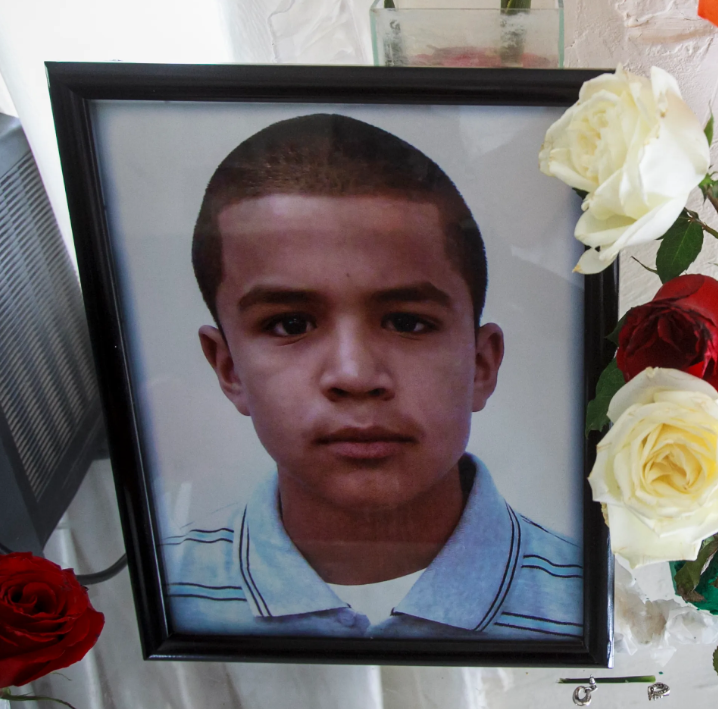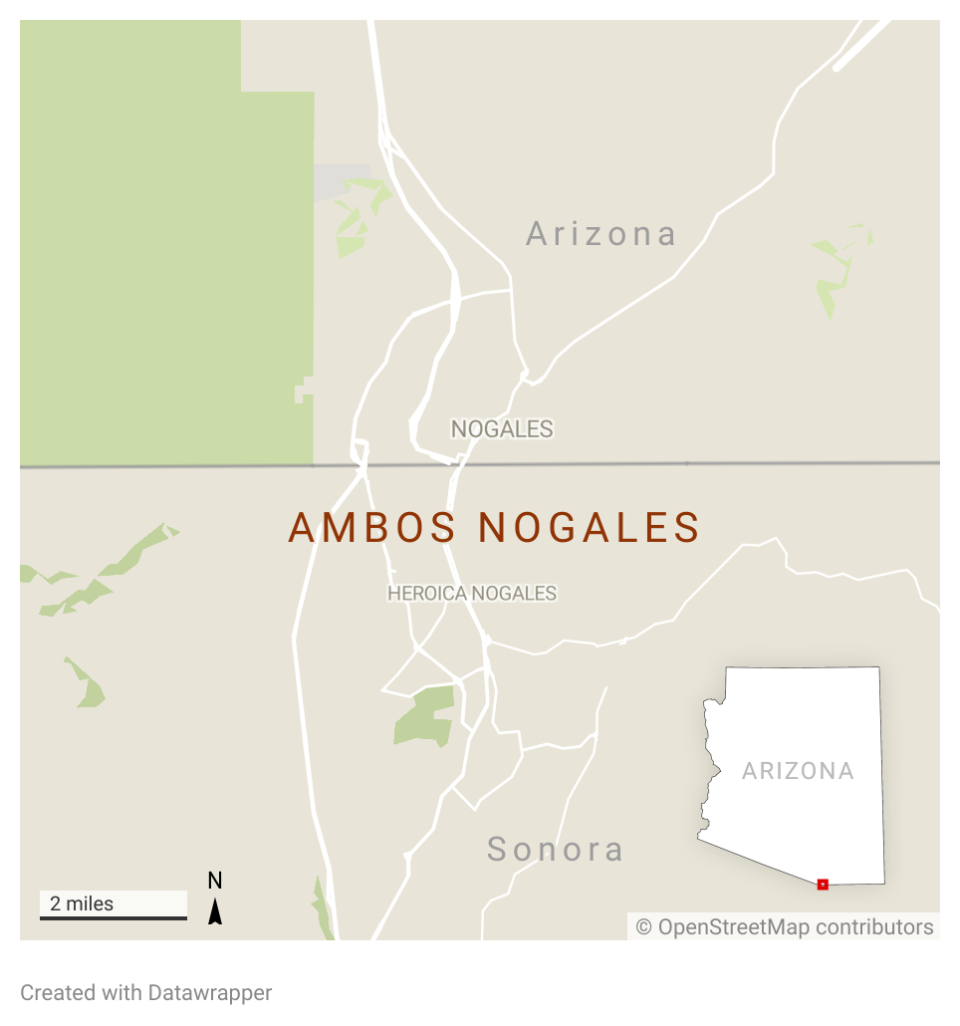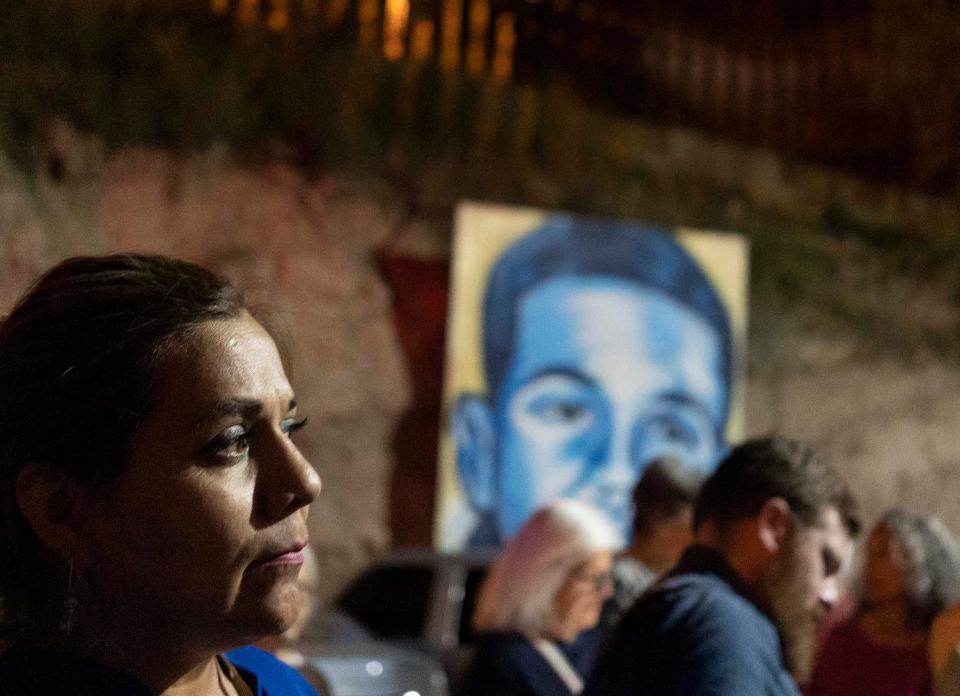Listen to the full season of 'Rediscovering: Killed Through the Border Fence'
It’s been almost a decade since a boy in Mexico was shot dead by a Border Patrol agent in the United States.
His family couldn't believe it. And federal prosecutors didn't let it pass, even though Border Patrol agents rarely are scrutinized for excessive force.
Recorded and retold in Spanish and English, these stories go beyond the killing of José Antonio Elena Rodríguez in search of something still elusive at the border: justice.
The ripple effects of the violence that night live on at the U.S.-Mexico border today.
José Antonio’s story, his family’s grief and persistence in seeking accountability for his death and how the international border affects life in the twin cities known as Ambos Nogales are the subject of a new podcast by The Arizona Republic and azcentral.com.
It's called: “Rediscovering: Killed Through the Border Fence," and it launches season 3 in the "Rediscovering" series.
LISTEN TO 'REDISCOVERING: KILLED THROUGH THE BORDER FENCE'
Episode 1: A metal cross and a painful memory
A U.S. border agent shot 16 times through the gaps in the border fence in the span of 34 seconds on the night of Oct. 10, 2012.
Ten bullets struck and killed 16-year-old José Antonio Elena Rodríguez, who was standing on the Mexico side of Ambos Nogales, a binational community.
The border agent claimed someone was throwing rocks over the fence and that he fired in self-defense. José Antonio’s family disputes that it was him.
The shooting set José Antonio’s mother, Araceli Rodríguez, and grandmother, Taide Elena, on a quest to seek answers and justice for his death.
Details about what happened on the U.S side of the border would stay under wraps for years. In the meantime, José Antonio’s family mobilized to press the U.S. government to take action.
Read the transcript for episode 1.
Episode 2: An identity revealed
It did not take long for the family of 16-year-old José Antonio Elena Rodríguez to start putting pressure on U.S. authorities.
They demanded that the U.S. Border Patrol release the name of the agent who had fired his gun from Arizona into Mexico in Ambos Nogales.
In July 2014, attorneys for José Antonio’s family filed a lawsuit in the United States on behalf of Araceli Rodríguez. The lawsuit accused the agent of violating José Antonio’s civil rights. The judge in the case would later order his name to be released to the public: Agent Lonnie Swartz.
After the shooting, U.S. Customs and Border Protection faced questions from the public on its use of force of policy and the lack of accountability when investigating misconduct and wrongdoing.
Read the transcript for episode 2.
Episode 3: A historic legal showdown
In a historic move, U.S. federal prosecutors charged Lonnie Swartz, a Border Patrol agent, with three separate charges in the shooting and killing of 16-year-old José Antonio Elena Rodríguez.
The most severe of the charges was for second degree murder, that meant prosecutors believed Lonnie had intentionally killed José Antonio. It was now their responsibility to prove that in court.
Bringing Swartz to trial took more than six years. In March 2018, the month-long murder trial kicked off in Tucson, about 60 miles north of Ambos Nogales.
A jury would decide if Swartz was guilty of the three charges against him and could bring an end to José Antonio's family journey towards justice.
Read the transcript for episode 3.
Episode 4: A continuing quest for justice
After two criminal trials against Lonnie Swartz wrapped up in Tucson, José Antonio’s family turned to their civil lawsuit against the agent.
Swartz’s attorneys argued that the agent had qualified immunity from prosecution in the case because he was carrying out work for the federal government. They also argued the teen’s family had no standing to sue because José Antonio did not have strong ties to the U.S.
The 9th U.S. Circuit Court of Appeals in San Francisco allowed the family’s lawsuit to move forward. But another case from a Mexican family in Ciudad Juarez who was in a similar circumstance stopped any momentum.
In June 2010, Border Patrol Agent Jesús Mesa Jr shot and killed 15-year-old Sergio Adrián Hernández Güereca along the border between El Paso and Ciudad Juarez. The Hernández Güereca family also filed a civil lawsuit against Mesa, but the 5th U.S. Circuit Court of Appeals’ decision clashed with judges in San Francisco.
Because of the opposing decisions, the Supreme Court of the United States decided to review the case out of El Paso. This would settle the question about what happens when a U.S. Border Patrol agent shoots and kills someone across the border in Mexico.
Read the transcript for episode 4.
'Point of the spear': Families look beyond U.S. courts to hold border agents accountable | More:Read coverage of the fatal shooting and a quest for justice
Frequently asked questions
Who is José Antonio Elena Rodríguez ?

José Antonio Elena Rodríguez grew up and lived in Nogales, Sonora, Mexico. His home was located in a neighborhood just south of the international border fence from Nogales, Arizona. He was 16 years old when he died in a cross-border shooting in 2012.
José Antonio’s family described him as a joyful teenager who loved eating sweets, especially chocolate. The teen was especially close to his brother Diego, who was older by two years. Their mother lived and worked in another city, about seven hours south of the border, and their father had died when they were younger. The two of them lived in Nogales with an aunt.
His family said José Antonio wanted to become a soldier. But those aspirations were cut short with his untimely death.
Who is Lonnie Swartz?
Lonnie Swartz joined the U.S. Border Patrol in September 2010. When he was 19, he enlisted in the U.S. Army but went absent without leave after two months. He was arrested and then discharged from the Army. He worked in construction before enlisting for the Border Patrol in September 2010.
He entered the Border Patrol Academy in New Mexico and then was assigned to the Nogales patrol station of the Tucson Sector. Months after arriving at the Arizona border, Swartz became a firearms instructor and began teaching other agents about gun safety and the agency’s use/-/of/-/force policies.
He was charged with murder for shooting and killing José Antonio Elena Rodríguez. But two separate juries in Tucson acquitted him of murder and involuntary manslaughter charges. He also faced a civil rights lawsuit. It was dismissed after the U.S. Supreme Court ruled that Mexican families in cross-border shootings had no standing to sue.
Customs and Border Protection officials declined to share information about whether Swartz is still a border agent or if he remains in Arizona.
Where is Ambos Nogales?
The twin border cities of Ambos Nogales form the largest binational community along the Arizona-Mexico border. The two cities were founded in the 1880s with the completion of the Sonoran Railway that connected northern Mexico to the U.S. Southwest. They were built into rolling hills and deep ravines.

Nogales, Sonora, is the largest of the two, with a population between 250,000 and 500,000. The city continues growing rapidly with the arrival of migrants and people looking for jobs at its large manufacturing plants. Nogales, Arizona, has a population of about 20,000 and is a major hub for importing fresh produce from Mexico. More than $26 billion in goods and services crossed through Nogales in 2021.
The cities’ location, at the center of the Sonoran Desert, also has made Ambos Nogales a major drug and human trafficking corridor. The rugged, parched terrain surrounding the city has killed hundreds of migrants attempting to cross into the U.S.
In addition to the name, the two cities share close cultural and business ties with each other. Many families live on both sides of the border and cross back and forth regularly.
Ambos Nogales: Stretch of Nogales a 'flashpoint' in rocking attacks
When did José Antonio die?
José Antonio Elena Rodríguez died the night of Oct.ober 10, 2012, just a few feet south of the international boundary fence in Ambos Nogales. He was shot and killed by Border Patrol Agent Lonnie Swartz, who fired 16 shots in the span of 34 seconds through a gap in the border fence.
Their encounter happened during a drug smuggling attempt about 800 feet west of the DeConcini border crossing in downtown Nogales. Swartz said he fired in self-defense when individuals on the Mexican side of the border began throwing rocks over the border fence.
José Antonio’s family said he was walking home and asserted that he was not throwing rocks at agents. More details about what happened that night surfaced during two criminal trials that Swartz faced in Tucson over the killing of José Antonio.
What does the Border Patrol do?
The U.S. Border Patrol is the largest law enforcement agency in the country, with nearly 20,000 agents. These agents are responsible for patrolling areas along the U.S. border in between the legal border crossings.
SUBSCRIBE Support local journalism
The Border Patrol maintains a heavy presence along the U.S.-Mexico border, where they operate checkpoints and conduct enforcement missions in an area up to 100 miles within U.S. territory.
Arizona has two Border Patrol sectors. The Yuma Sector covers southwestern Arizona and small portions of California around the Colorado River. The Tucson Sector is one of the largest in terms of size and staff among the nine sectors along the southern U.S. border. It covers two-thirds of Arizona’s international boundary and is one of the most active trafficking routes into the U.S.
Is it illegal to shoot into Mexico?
Anyone who has driven south across the border likely has read the signs: Carrying weapons and ammunition from the U.S. into Mexico is against the law in that country. But the question of cross-border shootings has long been contentious in the U.S.-Mexico borderlands.
In areas of heavy cartel fighting, like in the Mexican state of Tamaulipas, sometimes gunfire crosses the border north into Texas. But in numerous instances, Border Patrol agents have fired south to Mexico in pursuit of smugglers or in response to projectiles hurled from the Mexican side.
The Southern Border Communities Coalition, which maintains a list of fatal encounters along the border, has recorded 60 deadly use-of-force incidents since 2010. However, agents rarely face consequences. To date, Lonnie Swartz has been the only federal agent prosecuted in U.S. courts for a cross-border shooting.
More on the 'Rediscovering' series
This podcast by The Arizona Republic and azcentral.com is part of the "Rediscovering" series. It's a good way to connect with important moments in Arizona history that otherwise could be lost to time.
Listen and subscribe on Apple Podcasts, Spotify, Stitcher Radio or wherever you listen to podcasts.
Previous seasons in the series told the story of murdered Arizona Republic reporter Don Bolles through never-before-heard audiotapes and revisited the history of SB 1070: How it happened, who advocated for it and why it still matters.
Don Bolles: Listen to the full season of 'Rediscovering: Don Bolles, murdered Arizona journalist'
SB 1070: Listen to the full season of 'Rediscovering: SB 1070'

This article originally appeared on Arizona Republic: Listen to 'Rediscovering: Killed Through the Border Fence,' an azcentral podcast

